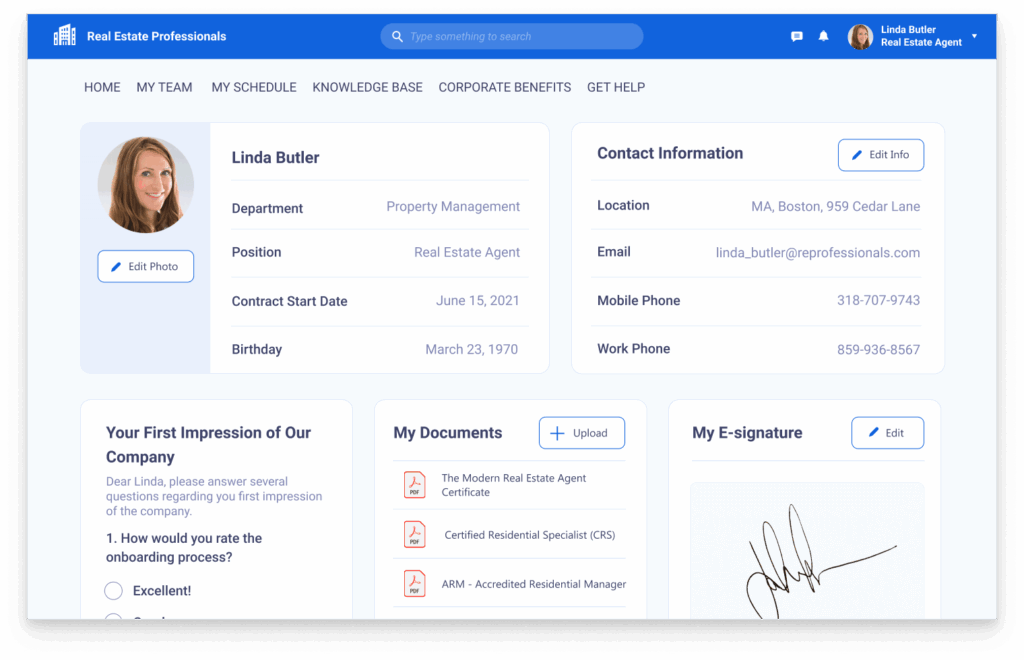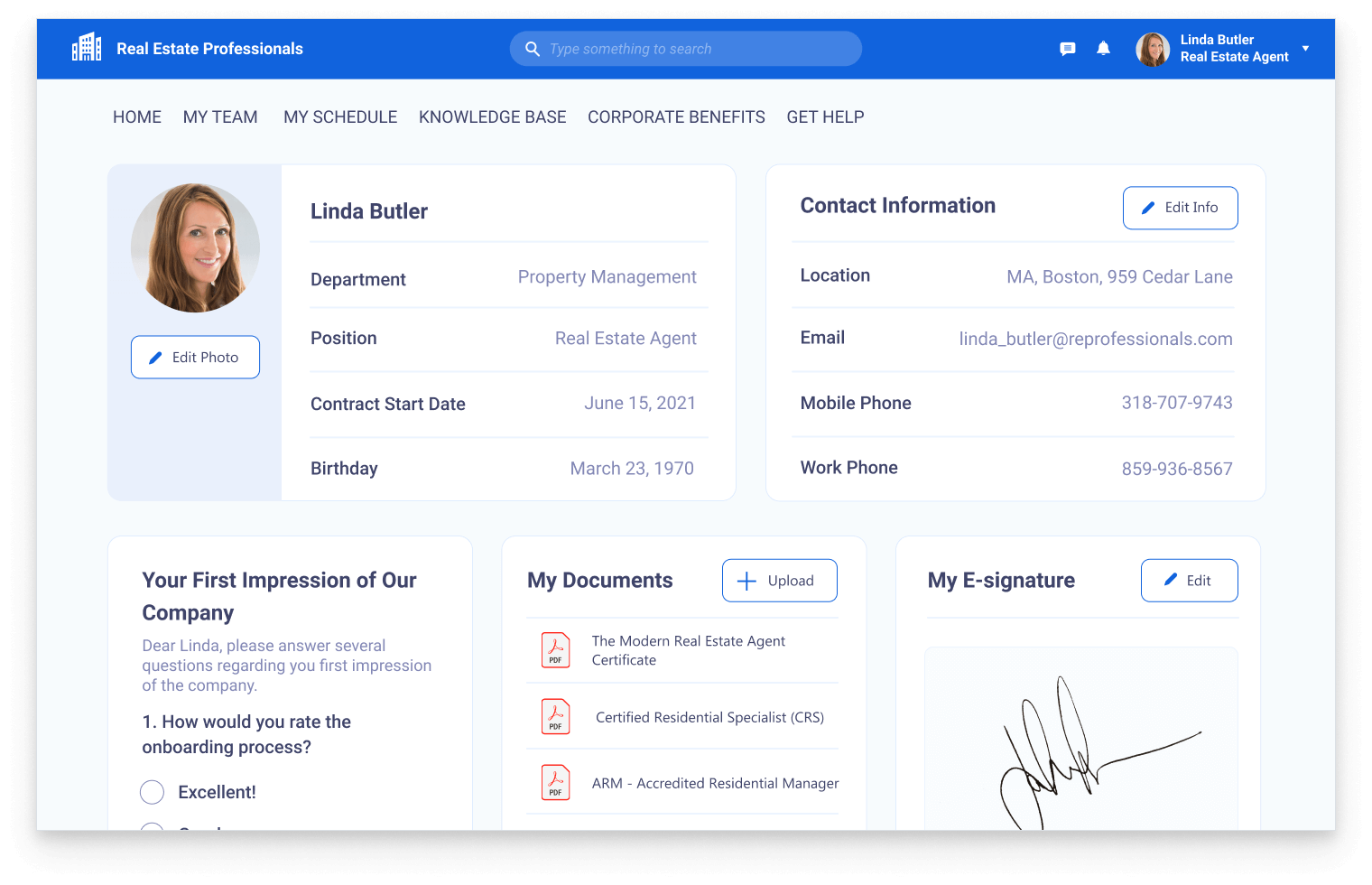
Streamline Your Workforce: Choosing the Right Employee Portal Software
In today’s dynamic business environment, efficient communication and resource management are paramount. One crucial tool for achieving this is robust employee portal software. An effective employee portal software solution acts as a centralized hub, connecting employees with essential information, resources, and communication channels, ultimately boosting productivity and engagement. This article delves into the key features, benefits, and considerations when selecting the right employee portal software for your organization.
What is Employee Portal Software?
Employee portal software is a web-based platform that provides employees with a single point of access to various company resources, tools, and information. Think of it as a digital gateway to everything an employee needs to perform their job effectively. It consolidates disparate systems, such as HR management, payroll, benefits administration, internal communications, and training materials, into a unified and user-friendly interface.
Key Features to Look For
When evaluating employee portal software, consider the following key features:
- User-Friendly Interface: The portal should be intuitive and easy to navigate, regardless of technical proficiency. A clean and well-organized interface ensures that employees can quickly find the information they need.
- Personalization and Customization: The ability to personalize the portal experience based on roles, departments, or individual preferences is crucial. Customization allows employees to see the information and tools most relevant to them.
- Mobile Accessibility: In today’s mobile-first world, access to the portal on smartphones and tablets is essential. A responsive design ensures a seamless experience across all devices.
- Communication and Collaboration Tools: Features like news feeds, announcements, discussion forums, and instant messaging enhance internal communication and foster collaboration among employees.
- Document Management: A centralized repository for important documents, such as employee handbooks, policy manuals, and training materials, streamlines access and ensures version control.
- HR and Payroll Integration: Seamless integration with HR and payroll systems allows employees to access pay stubs, benefits information, and time-off requests directly through the portal.
- Workflow Automation: Automating routine tasks, such as onboarding, performance reviews, and expense reporting, saves time and reduces administrative burden.
- Security and Compliance: Robust security measures are essential to protect sensitive employee data. The portal should comply with relevant data privacy regulations, such as GDPR and CCPA.
- Reporting and Analytics: Tracking portal usage and employee engagement provides valuable insights for optimizing the platform and improving communication strategies.
Benefits of Implementing Employee Portal Software
Implementing employee portal software offers numerous benefits for both employees and the organization as a whole:
- Improved Communication: Centralized communication channels ensure that employees receive timely and consistent information, reducing the risk of miscommunication and improving transparency.
- Increased Productivity: Streamlined access to information and resources empowers employees to work more efficiently and effectively.
- Enhanced Employee Engagement: A user-friendly portal that provides relevant information and tools can boost employee engagement and morale.
- Reduced Administrative Costs: Automating routine tasks and streamlining processes reduces administrative burden and frees up HR staff to focus on more strategic initiatives.
- Improved Data Accuracy: Centralized data management reduces the risk of errors and inconsistencies, ensuring data accuracy and compliance.
- Better Employee Experience: A well-designed employee portal software improves the overall employee experience by providing a convenient and user-friendly platform for accessing essential information and resources.
- Streamlined Onboarding: A portal can significantly streamline the onboarding process by providing new hires with access to all the necessary information and resources they need to get started.
- Enhanced Training and Development: The portal can be used to deliver online training modules, track employee progress, and provide access to learning resources.
Choosing the Right Employee Portal Software: A Step-by-Step Guide
Selecting the right employee portal software requires careful planning and consideration. Here’s a step-by-step guide to help you make the right choice:
Define Your Requirements
Start by identifying your organization’s specific needs and requirements. What are the key challenges you’re trying to solve? What features are essential for your employees? What is your budget? Clearly defining your requirements will help you narrow down your options and focus on the solutions that best meet your needs.
Research and Evaluate Vendors
Conduct thorough research to identify potential vendors. Look for vendors with a proven track record, positive customer reviews, and a strong understanding of your industry. Evaluate their offerings based on your defined requirements, considering factors such as features, pricing, scalability, and support. Don’t hesitate to ask for demos and trial periods to get a firsthand experience of the software.
Consider Integration Capabilities
Ensure that the employee portal software integrates seamlessly with your existing systems, such as HR management, payroll, and accounting software. Integration streamlines data flow, reduces manual data entry, and improves overall efficiency.
Assess Security and Compliance
Prioritize security and compliance when evaluating employee portal software. Ensure that the vendor has robust security measures in place to protect sensitive employee data. Verify that the software complies with relevant data privacy regulations, such as GDPR and CCPA.
Evaluate User Experience
The user experience is crucial for the success of any employee portal software. Choose a solution with an intuitive and user-friendly interface that is easy for employees to navigate. Consider conducting user testing to gather feedback and ensure that the portal meets the needs of your employees.
Check for Scalability
Choose an employee portal software that can scale with your organization as it grows. The software should be able to handle increasing numbers of users and data without compromising performance.
Review Customer Support
Ensure that the vendor provides reliable and responsive customer support. Look for vendors that offer a variety of support channels, such as phone, email, and online chat. Check for service level agreements (SLAs) to ensure timely resolution of issues.
Consider Pricing and ROI
Carefully consider the pricing model and calculate the potential return on investment (ROI) of the employee portal software. Compare pricing models from different vendors and factor in implementation costs, training costs, and ongoing maintenance costs. A well-chosen employee portal software should deliver a significant ROI by improving productivity, reducing administrative costs, and enhancing employee engagement.
Implementation and Training
Once you’ve selected an employee portal software, it’s important to plan and execute the implementation process carefully. Develop a detailed implementation plan, assign responsibilities, and communicate the rollout plan to employees. Provide comprehensive training to ensure that employees understand how to use the portal effectively. Offer ongoing support and resources to address any questions or issues that may arise.
Examples of Employee Portal Software Providers
Several reputable vendors offer employee portal software solutions. Some popular options include:
- Workday: A comprehensive HR management system with a robust employee portal.
- BambooHR: A user-friendly HR platform with a focus on employee experience.
- SAP SuccessFactors: A cloud-based HR solution with a wide range of features.
- Microsoft SharePoint: A versatile platform that can be customized to create an employee portal.
- Jostle: An employee engagement platform with a strong focus on communication and collaboration.
The Future of Employee Portals
The future of employee portal software is likely to be shaped by several key trends, including:
- Artificial Intelligence (AI): AI-powered chatbots and virtual assistants will provide personalized support and guidance to employees.
- Personalization: Portals will become even more personalized, tailoring the experience to individual employee needs and preferences.
- Integration with Collaboration Tools: Seamless integration with collaboration tools like Microsoft Teams and Slack will enhance communication and teamwork.
- Focus on Employee Wellbeing: Portals will increasingly incorporate features that promote employee wellbeing, such as stress management tools and access to mental health resources.
Conclusion
In conclusion, employee portal software is an essential tool for modern organizations seeking to streamline communication, improve productivity, and enhance employee engagement. By carefully evaluating your needs, researching vendors, and considering the key features outlined in this article, you can choose the right employee portal software to transform your workforce and drive business success. Investing in a well-designed and user-friendly employee portal software is an investment in your employees and the future of your organization. The right employee portal software solution can truly revolutionize the way your employees work and interact with the company, creating a more engaged, productive, and satisfied workforce. Remember to continually assess and update your employee portal software to adapt to evolving business needs and technological advancements.
[See also: Related Article Titles]

